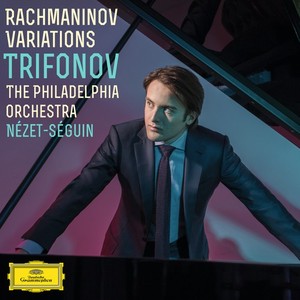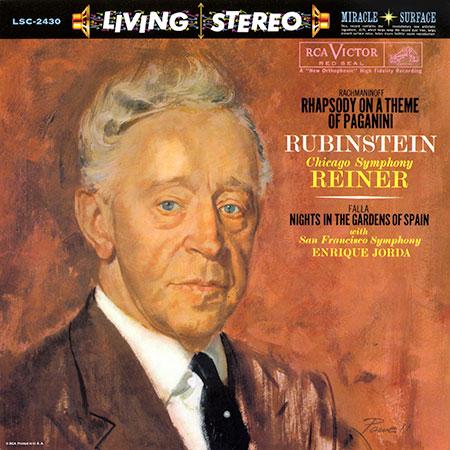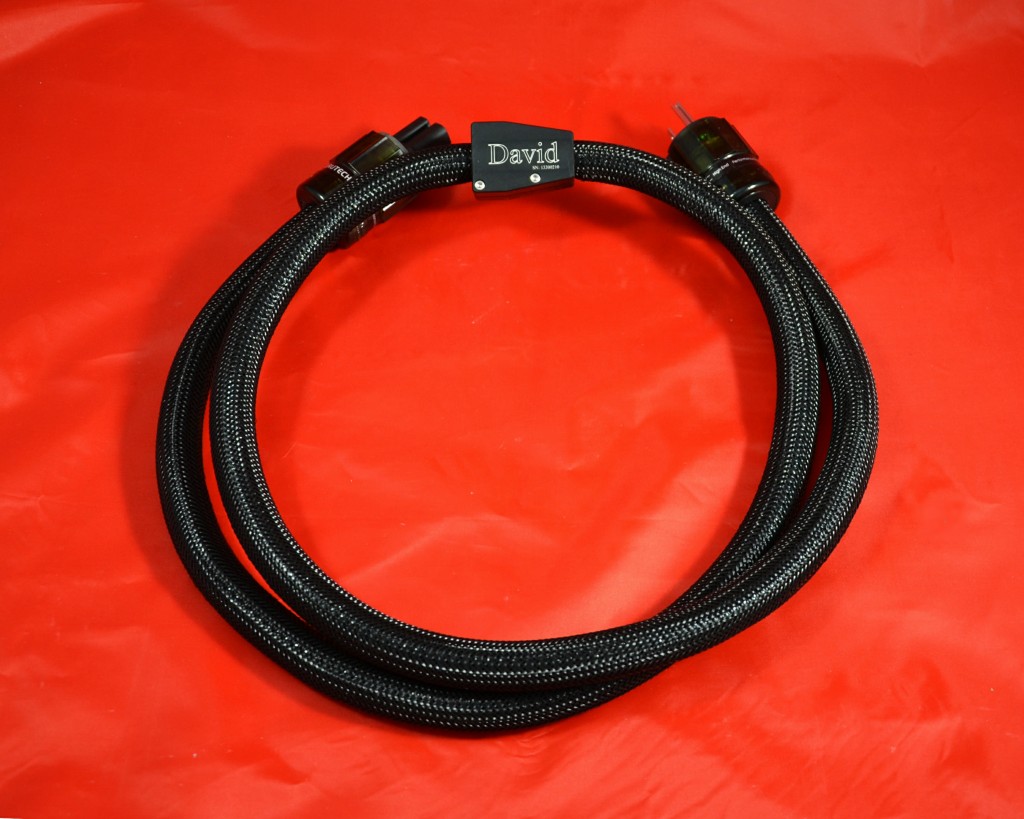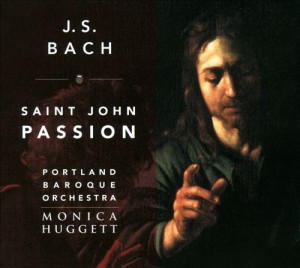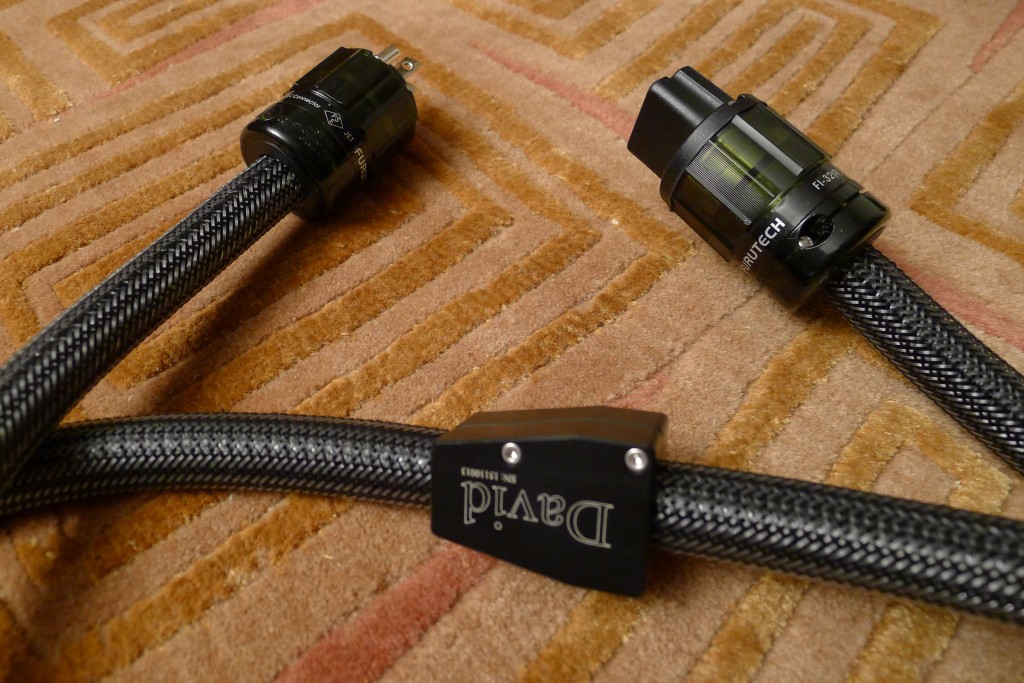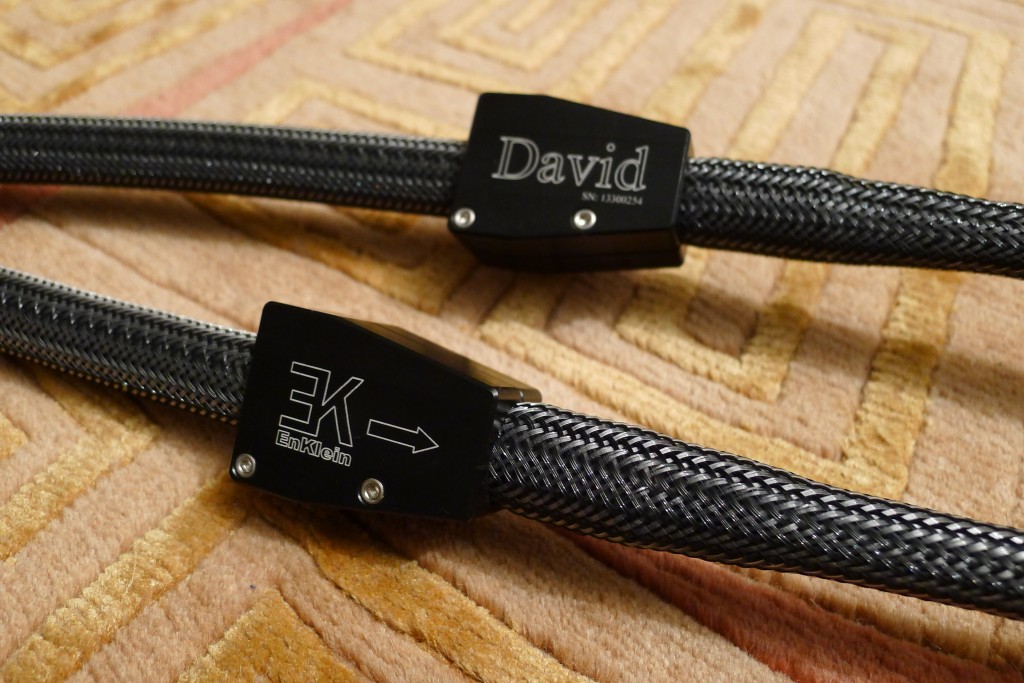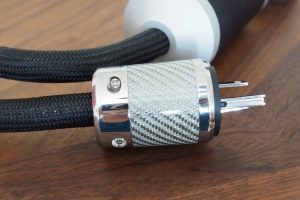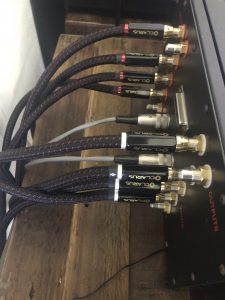HEADLINE: Rubinstein Bested by 24-Year-Old Russian Prodigy
"Where are the great artists of contemporary classical music?" The question is not infrequently raised in the listening room, usually by the same dudes who don't go to many live performances. That's not a good basis for an opinion. I attend concerts often and, let me assure you, first-rate talents abound; all it takes is a little effort to seek them out.
I am more disappointed by contemporary composition. When browsing concert brochures and I come across a program featuring a "new work," I'm disposed to move on.
Two of my current faves are on a new CD of Rachmaninov's Rhapsody on a Theme of Paganini with the Philadelphia Orchestra (DG 479 4970). Separately, pianist Daniil Trifonov and conductor Yannick Nézet-Séguin have wowed us in live performances. With the prospect of hearing them together, our expectations were running at full tilt when I eagerly pushed play.
It only took a moment to assess the performance. It is terrific. Many reviewers listed the CD as a candidate for the "Best of 2015." The score gives the pianist plenty of opportunities for gymnastics and Trifonov is not shy, effortlessly extracting color and nuance out of every note. The orchestra moves right with him, with spot-on entrances and rhythmic precision. The combined effort is perfectly synchronized: a meeting of equals working towards a common interpretive goal. Often when two super talents join up the outcome is a clash of egos.
I made haste to retrieve the famous Reiner/Rubinstein/Chicago Orchestra Golden Age LP from my cache (RCA LSC 2430, Shaded Dog first pressing), my reference for the work.
Ah! The sound of this antique LP is ridiculously good with my Kronos Sparta turntable feeding the Audio Consulting Silver Rock Phono Preamp (review coming shortly). But, uh-oh… Rubinstein certainly has the feeling, but the melodies are blurry because the piano notes are not evenly articulated. And the orchestra makes a fair share of bad entrances. They even have intonation issues. Jeeze, the demi-gods on the Golden Age LP are not holding their own…reputations are getting bruised…I thought I knew this LP.
These observations were not difficult to discern. The information was coming through loud and clear, as if the regulator valve on the pipeline from vinyl media to aural membrane had been adjusted—the spigot opened wider and cleansed of debris—allowing the message to flow easily, effortlessly. Less effort was required to "get it." Hell, how could you not get it?
I had just put a pair of David power cables from Enklein on my CH M1 Monoblocks. Enklein is an American manufacturer based in Missouri, dedicated to bringing "cutting edge transmission technology to deliver new and exotic high performance custom cabling and power products for high end audio."
For the next musical selection I played J. S. Bach's St. John Passion, with Monica Huggett and the Portland Baroque Orchestra (Avie 2236). Right away in the opening orchestral overture, the David PCs imparted a deep sense of quietude. It went beyond a drop in the noise floor—things calmed down. There was less clutter on the soundstage, less "stuff" around the instruments. Everything extraneous had been purged, and only musically relevant information remained. This made the musical lines so clear I was prompted to ask, "Was it simplified, a reduction, perhaps?" After a while I decided negative, because everything important was present. But it sure was different.
I could discern the number of musicians on the stage (or in the chapel, in this case). The chorus enters; there are massed trebles, tenors, sopranos, etc. Again, you sense how big the forces are. (Not large, as it turns out. The orchestra and the chorus were stripped down in an effort to reflect "the resources available to Bach in 1724.") The David lets you hear what each section is doing discretely.
Individual vocalists present themselves. I am quite familiar with the principle tenor, Charles Daniels, having seen him live many times at the International Chamber Music Festival in Ottawa, Canada. I even watch for his CD releases. He has a slightly nasal tone and distinctive phrasing, almost a stop and stutter staccato mannerism. These abrupt dynamic transitions can be jarring. Nevertheless, I enjoy him very much.
I know what he sounds like and these qualities are present now. The David PCs on my amps make every singer on the recording sound different. They also capture the whiny quality of the baroque strings and the varied textures and shapes of the violins, cellos, and harpsichord.
These PCs probe deeply and dig up lots of new information. The David will let you know such things as when a recording was done in a studio employing separate booths and multi-miking, or on different days and then spliced together. Through the David you will hear the time and space discontinuity.
Timbres are satisfying and complete. However, it is not a notably beautiful sound. It is not enhanced or embellished. Enklein takes pride in being firmly rooted in the neutral zone.
When I say the Enklein David opened the communication spigot and allowed the message to flow easily, it has to do with three things: the removal of extraneous noise; ultra high resolution; and a really extended dynamic range. This new-found dynamic power struck me as aggressive at first; even the micro events had more punch. I had to get used to this kind of force in playback, but it quickly became the norm.
In this capacity, the David PCs brought back fond memories of my early years in the hobby, when I first got hooked. Upgrades and insights happened fairly regularly back then. "You don't have to work so hard to hear the music. It makes connecting the dots so much easier," was often heard around the audio den.
Vanilla and Chocolate Flavors
But not everyone prefers vanilla; some like chocolate. To put this in perspective, you can contrast the David's presentation with that of my reference Kubala•Sosna Elation!. In my system with CH Precision electronics, the K•S is a communicator, but in a different way.
The Enklein David positions the listener up close: you are sitting alongside the microphone and hearing what it heard. It gives you what's on the recording.
However, some listeners enjoy a mid-hall perspective, where the room's contributions cover part of the direct sound and there's more of a blend. That's where the K•S positions you: it recreates a mid-hall concert experience. Warmer and more holistic, it presents a smooth surface with no gaps in the span between the speakers and individual players don't stand out from the group. Lynn observed that "the David could use more noise in a Photoshop sense of the word." Noise adds texture and pliability.
Cosmetics
The black-sheathed Enklein David Power Cord exudes quality in fabrication and cosmetics. Handmade using premium parts, the assembly is first-rate. The IEC and AC plugs are top-line Furutech and fit snugly into receiving sockets. It is physically a lot thinner in diameter than the K•S, but also a bit stiffer. I'd put it in the middle range of stiffness—not the most limber, but not inflexible like some. All in all, a cable with well-above average construction and cosmetics.
Tech Bullet Points
The designer sent me this statement:
The technology involved in creating the 99.9 percent silver conductor with copper alloy reinforcement "David Power Cord", stems from our years of research and development in Government and Commercial Signals/Communication/Power systems.
Although too lengthy to describe them all, a few of the technologies derived from the David interconnect to a high current capable system are:
Balanced Shield noise cancellation
Electromagnetic Interference System Shield (EMISS)
Patent pending shield energy dissipation controller
The priorities of the Enklein design team are:
- to eliminate electromagnetic noise
- to protect the signal
Conclusion
The Enklein David Power Cord has a modern, contemporary type of sound. With extremely high resolution, uncommonly wide dynamic range, and fidelity to the source, there is plenty to enjoy. Clean and pure, the David refrains from editorializing or embellishing the sound in any way. It resides firmly in the neutral camp.
Abundant fresh details were retrieved and it seemed to present fewer obstructions in the signal path, which allowed the musical message to flow effortlessly. All the extraneous stuff was purged and the communication channel was wide open.
Perhaps the highest compliment I can grant to Enklein's David Power Cord is it transmits just what the microphone recorded. Those listeners who value fidelity to the source at the top of their list will find the David just their cup of tea.
David Power Cord
Retail: $7750/4 ft
Enklein
Postscript
For the record, I have to mention this review unintentionally got off on the wrong foot. What happened was a bad case of cable incompatibility. The plot unfolded like this.
When the first batch of Enklein Power Cords arrived, I placed them on my front-end sources, after allowing for burn-in.
The sound was not good, it was thin and edgy. I knew that wasn't right—they sure didn't sound that way at the Rhapsody Music and Cinema showroom in NYC where I auditioned them.
I placed an anxious phone call to Dave Kleinbeck, the managing director and design engineer, to discuss the situation. Quite calmly, he pronounced the probable cause: It was the mix of power cords. I had K•S Elation! from the wall to a K•S XPander Power Distributor. The Davids followed from the XPander to the source components. The David and the K•S did not play well together. Apparently mine was not the first occurrence to come to Enklein's attention.
I was instructed to put the Enklein PCs to the side. Meanwhile, they would fabricate another pair suitable for my CH M1 monoblock amps. This was logical, as my amps connect direct to the wall with nothing intervening and I would be hearing the cable and nothing else. This is the configuration I described in the review.
I've had cable interactions before, but never this deleterious. This is something to keep in mind should you audition the Enklein David and not get what you expected. Cable compatibility might be the cause, not the product.




